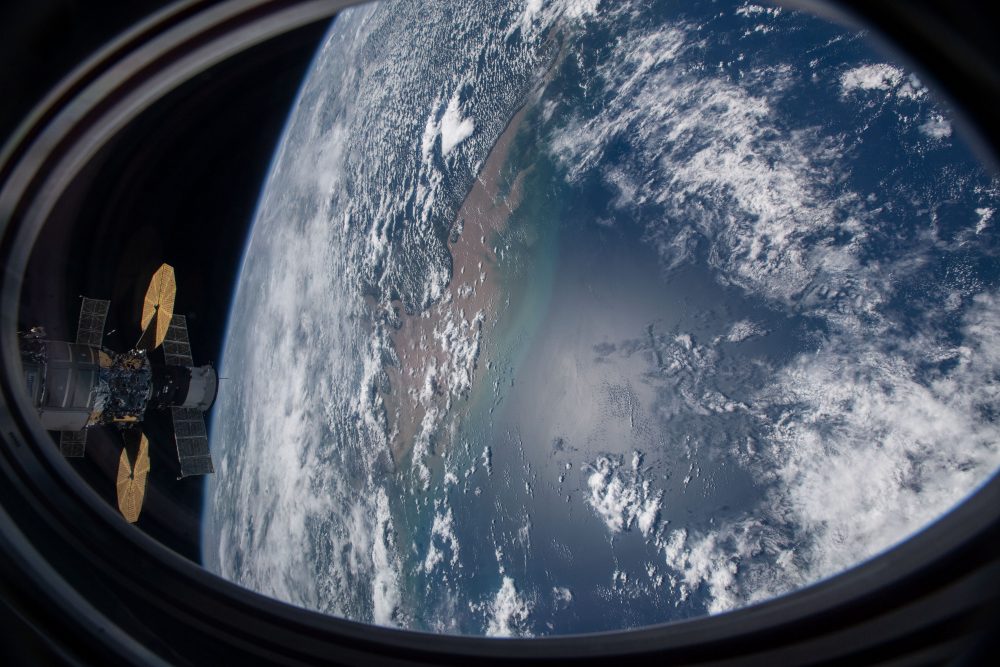Smile: you might be some alien‘s favourite character on the reality TV show called Earth.

A new scientific report suggests that there are 29 planets in our cosmic neighbourhood where alien life could potentially see and hear evidence of humans on Earth, based on humanity’s own techniques for studying the universe.
The report was published Wednesday by two New York-based astronomers in the journal Nature, in an effort to narrow down our own search for alien life among the stars. It doesn’t attempt to prove that anyone is actually out there listening, or that they’d want to hear from us if they were. The report simply tries to determine where our most likely alien audiences would be.
The authors assume that aliens would be able to spot Earth by seeing its faint shadow as it transits in front of the sun — a technique that we’ve used to find many Earth-like worlds to date.
“One way we find planets is if they block out part of the light from their host star,” Lisa Kaltenegger, director of the Carl Sagan Institute at Cornell University and co-author of the article, told The Guardian. “We asked, ‘Who would we be the aliens for, if somebody else was looking?’ There is this tiny sliver in the sky where other star systems have a cosmic front seat to find Earth as a transiting planet.”
Astronomers identified 1,715 solar systems that would be able to spot Earth during humanity’s period of existence, plus or minus 5,000 years from today. They narrowed the list down to 46 star systems that are close enough to hear our planet’s radio and TV broadcasts, which only began about 100 years ago. Finally, they trimmed out the most inhospitable systems to reach an estimated 29 planets where alien life might be able to see and hear us from afar.
“We wanted to use the closest stars,” said Jackie Faherty, a senior scientist at the American Museum of Natural History and co-author on the paper. “When it comes to exploring worlds, the nearest ones to us are going to be the most exciting,” Faherty told NPR.
Aliens living on Ross-128 b, for example, might’ve already discovered us, while inhabitants of Teegarden’s Star b and c will get a chance to spot Earth in about 29 years, according to the astronomers’ projections.
The study authors say that these worlds should be priority targets in our own search for alien life, because perhaps we will get lucky and discover someone else looking back at us.
“When I look up at the sky, it looks a little bit friendlier because it’s like, maybe somebody is waving,” Kaltenegger said.
Faherty says Earth would be pretty easy for aliens to spot from a distance, especially with all the broadcasts we are giving off.
“It made me feel very vulnerable,” she said. She also acknowledged that perhaps there is no one out there to hear us, or that they wouldn’t appreciate knowing that we’re here.
“Maybe none of (the stars) have anything like us,” she said.
Some thinkers, including the late theoretical physicist and cosmologist Stephen Hawking, have warned against trying to contact intelligent life on other worlds because perhaps they wouldn’t be happy to hear from us. Some have even suggested that there might be many alien races out there among the stars, but they’re all staying quiet to avoid a major threat to their civilizations.
Meanwhile, we’re blasting our radio waves throughout the cosmic neighbourhood and contemplating whether to send messages across greater distances in hopes of getting an answer.
Nevertheless, alien-hunters on Earth say they’re excited by the possibilities raised by this report.
“You might know where to look for the aliens!” said outside astronomer Seth Shostak, of the SETI Institute that searches for extraterrestrial intelligence.

“Intelligent civilizations who build space telescopes could be studying us right now,” added Alan Boss, a planetary scientist at the Carnegie Institution for Science who was not involved in the study. He told the Associated Press that the report is “provocative,” although it’s important to remember that it takes a long time for messages and even living creatures to travel between the stars.
“We should not expect aliens to show up anytime soon,” he said.
In other words, it’s entirely possible that an intelligent race is watching us from afar and laying plans to make contact at some far-off future date.
It’s also possible that we sent a bunch of Storm Area 51 memes to bacteria on another world — or that we provoked a race of killer robots by showing them the series finale of Keeping Up With the Kardashians.
— With files from The Associated Press




Comments